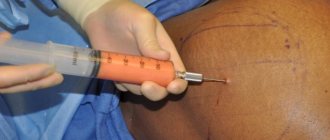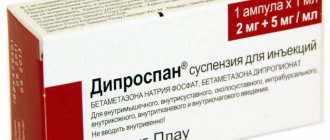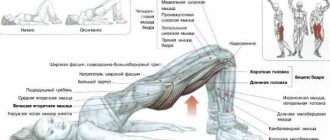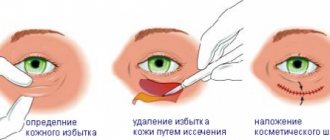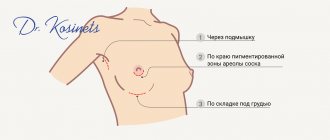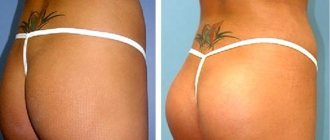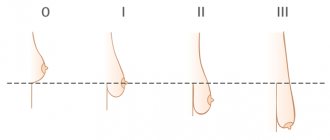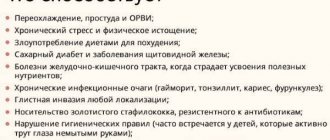Indications for use
Typically, buttock surgery is required in cases where attempts to build up the gluteal muscles with the help of special exercises and nutrition do not bring results. The most common indications for plastic surgery:
- Sagging of soft tissues as a result of age-related changes;
- Decreased volume due to weight loss;
- Muscular atrophy;
- Mechanical injuries;
- Insufficient volume of gluteal tissue;
- Asymmetry;
- Underdevelopment of muscles;
- The desire to correct the form.
Contraindications
Gluteoplasty is not performed with the following restrictions:
- Age up to 21 years;
- Obesity;
- Hormonal imbalance;
- Diseases of the heart and blood vessels;
- Diabetes;
- Menstruation and 7 days before and after it;
- Reduced blood clotting;
- Inflammation in the operated area;
- Infections and viruses in the acute stage;
- Benign and malignant formations;
- Skin grafts on the buttocks;
- Dermatological diseases in the treatment area;
- Kidney failure.
Types of plastic surgery
Depending on the location of the implant, there are three types of plastic surgery:
- with installation of a prosthesis under the gluteus maximus muscle - the optimal solution for placing round implants, the volume of which does not exceed 200 ml;
- with installation of an endoprosthesis under the muscular fascia - the operation of choice for significant atrophy of the gluteal muscles;
- with the implant located between the gluteus maximus and gluteus medius muscles - a technically complex but reliable type of surgical intervention, which is performed only by the most trained surgeons.
Somewhat less often, plastic surgery is performed without installing prostheses with excision of excess skin and/or removal of excess subcutaneous fat.
Types of implants
For plastic surgery, hypoallergenic, safe materials with highly adhesive silicone content are used. The filler provides natural softness and a “memory effect”, as a result of which the shape is restored after physical impact. The products differ from breast prostheses only in their thick shell, which eliminates the possibility of damage. There are no external differences.
Elastomers vary in shape and size. Round implants are implanted into round-shaped buttocks; with them, the contours can become unnatural. Anatomical oval models are used to increase volume while maintaining naturalness, and teardrop-shaped models are used to correct the deformation of pear-shaped butts. The filler volume varies from 140 to 480 ml.
The surgeon, based on the individual characteristics of the woman’s figure, selects the appropriate implants. Here it is important to make the right choice, because with an overly voluminous prosthesis, the butt will turn out to be in the form of lumps and will bulge strongly in any position of the body.
Popular manufacturers of buttock implants are Eurosilicone and Silimed; they provide a lifetime guarantee on their products. Due to its high strength, there is no need to replace it. When ruptured, the silicone does not leak out and the shape does not change.
It is worth noting
When walking slowly, the gluteus maximus muscle almost does not work; it “turns on” only during fast running, squats and other types of physical activity.
Gluteoplasty (the name of the procedure comes from the Latin name for the muscles of the buttocks - gluteus) is a surgical intervention during which the doctor installs implants of a shape and size previously discussed with the patient. Like any other operation, gluteoplasty is performed after appropriate preparation, medical examination to exclude possible contraindications and under general anesthesia.
The reasons for the violation of the shape of the buttocks are:
- age-related changes that cause weakening of muscles and sagging skin;
- sedentary lifestyle, physical inactivity, lack of appropriate physical activity;
- severe injuries accompanied by disruption of the structure of the gluteal muscle;
- excess body weight;
- sudden weight loss.
Preparatory activities
The first step to increasing the volume of the butt is a consultation with a surgeon, where the doctor collects an anamnesis and makes a preliminary selection of endoprostheses.
In order to eliminate contraindications and obtain permission for surgery, you need to undergo a number of studies:
- Donate blood for general analysis and biochemistry;
- Make a coagulogram;
- Fluorography;
- Electrocardiogram;
- Get checked for hidden infections.
The preparatory stage is standard, as before other surgical interventions:
- Within 14 days, the consumption of alcoholic beverages is stopped and smoking is limited. Bad habits aggravate the recovery period;
- For 10 days, taking medications and contraceptives is excluded. For example, aspirin, which affects blood thickness. If this rule is ignored, if the patient has not informed the doctor, the state of health worsens at the time of the operation, as well as after it;
- Sports training stops within a week;
- You are not allowed to eat fatty, spicy, fried foods during the day; a light snack is acceptable 8 hours before;
- You should take a sedative the day before.
How is the operation performed?
Buttock enlargement surgery is performed under spinal or general anesthesia (less commonly, using endotracheal anesthesia) for 1.5 - 2 hours.
The main stages of plastic surgery are as follows:
- In the sacral region, along the natural fold, a vertical upper incision is made (Pascal's cut for trochanteric sagging) or a lower (median) incision (butterfly cut for severely drooping buttocks) of about 3-5 cm;
- A pocket is created to place implants in an area where there are fewer large vessels;
- Silicone inserts are distributed;
- Internal and cosmetic stitches are applied.
The difficulty of the procedure lies in bypassing the nerves, otherwise their damage leads to complications.
The formation of the prosthetic bed is carried out in three positions to choose from:
- Under the big muscle. Due to its thickness, the difficulty of performing the operation increases. With this technology, implants up to 200 ml are placed;
- Under the fascia (between the muscles). The technique is used for injuries or atrophy;
- Inside the muscle. The recovery process takes less time.
Subcutaneous installation is not recommended at all, because the butt looks unnatural and the risk of capsular fibrosis increases.
Carrying out gluteoplasty
The duration of the surgery to increase the volume of the buttocks is from 1.5 to 2 hours.
Despite its apparent simplicity, this is a very responsible surgical intervention, which involves the best anesthesiologists and plastic surgeons. After all, the consequence of an unsuccessful gluteoplasty can be a patient’s walking impairment for the rest of his life.
Selection of implants
The success of buttock augmentation surgery is largely determined by correctly selected implants .
Prostheses are selected individually for each specific case. Not only the wishes of the patient are taken into account, but also the characteristics of his figure, the structure and shape of the gluteal region. After all, the task of the operation is to adjust the size and volume of the buttocks so that they harmoniously decorate the figure.
The outline of an overly large denture will be visually noticeable in almost any position except standing. A prosthesis that is too small will also stand out on flat buttocks with a lack of soft tissue.
It is important that buttock implants, which are installed for life, are:
- Elastic.
- Hypoallergenic.
- Durable.
- Safe.
Then they look natural, do not interfere with walking or sitting, are not visible or palpable, and form one whole with the gluteal muscle.
For surgery to increase the volume of the buttocks, sealed, heavy-duty products are used, filled inside with viscous silicone gel.
The surface of the implants can be smooth or textured. The shape can be either anatomical or round.
Implants also vary in size.
How is plastic surgery performed?
- Gluteoplasty is performed under general anesthesia . In some cases, local anesthesia is used in combination with sedative drugs, or subdural anesthesia or endotracheal anesthesia.
- Once the anesthesia has begun to take effect, the surgeon makes a small, about 3-5 centimeters, incision in the upper part of the buttock , where the skin has a natural fold.
- A cavity is then created inside the buttock where the prosthesis will be placed. The size of the cavity should not extend beyond the muscular fascia.
- After this, the implant is installed in the prepared space. In most cases, the prosthesis is placed under the gluteus maximus muscle. Less commonly used is supramuscular or intermuscular placement of the implant.
Subcutaneous installation of a buttock prosthesis is strictly not recommended!
- Next, the surgical wound is closed with a suture , which is applied using staples or special surgical sutures. If it is necessary to ensure the outflow of fluid from the tissues, drainage is installed in the wound during the operation.
Most often, self-absorbable threads are used to close the incision, which dissolve about a week after the operation.
It is extremely important not to damage the nerve and vascular branches during the operation, especially the sciatic nerve, as this can lead to serious complications. Therefore, buttock surgery is trusted only to experienced and very careful surgeons who have mastered the impeccable technique of performing the operation.
Rehabilitation period
Gluteoplasty involves a longer recovery than after mammoplasty, because the butt is a moving part of the body. You can start working duties in a month.
The hospital stay lasts about 2-3 days. The patient is then sent home. You need to be prepared for the fact that moving around is not easy and will be difficult without outside help.
The pain syndrome is relieved with painkillers. The woman feels discomfort with any movement. Swelling, numbness, increased temperature and decreased sensitivity are observed for about 5-7 days. The sutures are removed no earlier than after half a month; before this, the wound must be treated with hydrogen peroxide.
Features of recovery after buttock augmentation surgery include:
- For the first 7 days, it is forbidden to walk or sit, as injured tissues remind of themselves with sharp pain;
- At the beginning of the second week, you are allowed to walk a little;
- You need to sleep on your stomach or side for two months so as not to change the new shape of your buttocks;
- In order not to provoke inflammation, exposure to the sun is limited. In addition, you cannot visit the sauna, solarium, or take a bath for the same reasons;
- It is mandatory to wear compression clothing for two months. For example, panties or shorts. The doctor independently selects the size, because... the patient may make a mistake with her choice - the underwear will put too much pressure on the operated area or will not fix it enough. It helps reduce swelling and keeps tissues in a stationary state. This stage is very important and if you give up workwear early, the result will worsen. For 30 days, panties are worn around the clock and removed only in the shower; the next month you can remove them while sleeping;
- Physical activity is permissible no earlier than after 6 weeks. Activity should be increased gradually. Fitness classes are allowed after 3-5 months;
- Showering and any hygiene procedures are prohibited during the period until the stitches are removed.
The most important limitation in the future is to perform intramuscular injections only in the thigh or shoulder, so as not to damage the implants.
Recovery after surgery
After the operation has taken place, it is necessary to go through a rehabilitation period, during which health, well-being and performance are restored. Below are the main recommendations for this important period.
For the first two or three days, sleeping on your back is prohibited. The ban is associated with the danger of deformation of the newly created shape of the buttocks, divergence of the seams, and painful sensations.
Two to three days after the intervention there is a ban on showering. And for the first five to seven days it is recommended to be mostly in a supine position and, preferably, not on your back. It is prohibited to visit the solarium, sauna or bathhouse for 46 weeks after gluteoplasty.
Sitting should be minimized for two to three weeks after surgery. As you can see, for those whose work requires constant sitting, it is better to have surgery while on vacation, since full-time work during the rehabilitation period will be impossible.
For one and a half months after the intervention, it is recommended to wear special compression garments.
Physical activity, including in the gym, is allowed only two months after gluteoplasty.
If you are prescribed intramuscular injections within two months after surgery, the medicine will have to be injected into other parts of the body, but not into the buttocks.
Important: injections into the gluteal region after implantation are prohibited for life. Or as long as the implants are in the buttocks.
Scars can be smeared with the medications recommended by the doctor, and if severe pain occurs, you can take painkillers.
Let us note that the body will fully “come to its senses” only 4-6 months after gluteoplasty. Sometimes during the recovery period there is some swelling, soreness, and sometimes numbness in certain areas in the buttocks area. You can return to work (including sedentary work) 2-3 weeks after the intervention.
Possible complications
The following complications may arise after surgery:
- Increased pain threshold;
- Displacement of the prosthesis. Pain is felt in the tissues when walking. The main reason is the low location;
- Seroma and hematoma. Requires installation of a drainage system for several weeks to remove fluid. In case of incomplete removal, puncture is necessary;
- Contouring along the edges as a result of the insert slipping out of the formed pocket;
- Feeling the silicone during palpation;
- Wound suppuration;
- Seams coming apart;
- Development of hypertrophic or keloid scars;
- Capsular contracture. Implants harden when placed close to the skin.
The risk of side effects is minimal, but it does occur.
Specific difficulties after gluteoplasty:
- Decreased sensitivity, which recovers after 6-12 months;
- Asymmetry of the buttocks;
- Change in gait as a result of pressure on the sciatic nerve;
- Numbness, burning, freezing of the gluteal muscles. Characterized by excision of nerve fibers.
Alternative to plastic surgery
Minimally invasive correction options include:
- Brazilian thread lift (filament lifting);
- Injection with your own fat (lipofilling).
Filamentlitting allows you to lift sagging buttocks upward. The result is a rounded butt.
Types of threads
The surgeon selects certain materials based on the indications for:
- Mesothreads. They do not correct already developed ptosis, but only prevent it. Since they do not have any hooks, the necessary tension is not provided and lifting does not work. Threads are used by ladies who are satisfied with their figure and want to maintain it for as long as possible. As it dissolves, it stimulates the production of collagen fibers responsible for skin elasticity;
- Polymilk. During breakdown, lactic acid is formed, which causes elastin to be synthesized. The material has notches that help fix soft tissues in a certain position. The effect lasts about 9-12 months;
- Non-absorbable. Thanks to the large grooves, the threads penetrate deeply inside and stretch the fabric. The result lasts about 5 years.
Carrying out the procedure
The lift begins with the administration of local anesthesia and marking. After the treatment area is disinfected, the doctor makes small punctures (about 1.5 cm) and, using cannulas, inserts threads between the dermis and muscle. Each buttock has 6 to 10 strings. They are then stretched and the excess is trimmed off.
The process is completed by applying cold to prevent swelling and blue discoloration. All manipulations are carried out within an hour. For the first three weeks, you should not sit on anything hard, bend over, make sudden movements, or massage your buttocks. If the pain gets worse, you can take painkillers.
Lipolifting involves using your own fat to replenish the lost volume of the buttocks. An analysis of figure proportions is added to the standard package of examinations.
The procedure is performed under general anesthesia for 2 hours according to the plan:
- Treatment of the edited area with antimicrobial antiseptics;
- Pumping out fatty tissue (mainly from the waist or hips). It is important to maintain sterility so that the cells do not die. Typically, 400 to 900 ml are used and some of this is discarded;
- Centrifuge cleaning;
- Injection of prepared autofat subcutaneously with special thin syringes;
- Applying plasters and bandages.
This method of buttock enlargement entails such difficulties as:
- Swelling that subsides after 1-2 weeks;
- Asymmetry. Occurs in 60% of cases due to greater introduction of material;
- Formation of depressions and folds on the surface of the skin;
- Soreness during the first days.
Repeated surgery is necessary after 2-3 years, when the butt acquires its original shape.
Recovery period
Rehabilitation after gluteoplasty lasts from 1 to 2 months. After the implants are inserted, the patient is dressed in compression garments, which helps the healing process. You can get out of bed 8-12 hours after the intervention, and move independently the next day.
For the first month, it is recommended to sleep exclusively on your stomach. Clothing should be as loose as possible and not constrict the buttocks. It is not recommended to visit bathhouses, solariums and swimming pools, as well as to engage in physical exercise, as this can cause a disruption in the body’s adaptation process.
You should not sit on a hard surface or lie on your back for two weeks. Failure to follow these recommendations can provoke the development of complications in which the integrity of the implant is compromised, which is extremely dangerous for the body.
Advantages and disadvantages of the operation
By comparing different methods, you can weigh the pros and cons:
| View | pros | Minuses |
| Thread lift |
|
|
| Endoprosthetics |
|
|
| Lipofilling |
|
|
The average prices in the capital are as follows:
- Buttock augmentation with implants – from 220 thousand rubles. including endoprostheses
- Lipofilling – from 90 thousand rubles. depending on the volume of your own fat
- Lifting with biothreads from 120 thousand rubles.
Read more detailed information on gluteoplasty in a special section of our forum
It is worth noting
Gluteoplasty is performed solely for aesthetic purposes.
Therefore, the only indication for its implementation is dissatisfaction with one’s own appearance and the desire to change the shape and size of the buttocks for the better. Gluteoplasty is contraindicated for:
- increased tendency to bleeding or, conversely, the formation of blood clots;
- systemic infections;
- severe damage to the liver, kidneys, respiratory tract, endocrine system;
- intolerance to drugs and materials used during surgery;
- obesity;
- pregnancy and lactation;
- oncological diseases;
- severe hypertension.
Gluteoplasty can be postponed indefinitely if the body temperature has risen or symptoms of a viral disease have arisen. It is also better to refrain from surgery if skin rashes of unknown origin or exacerbation of chronic pathologies appear.
Prices for gluteoplasty in Moscow
Fuad Farhat
Gluteoplasty (price includes implants)
from 250,000 rub.
Demin Sergey
Initial consultation with a plastic surgeon
RUB 1,000
Buttock surgery + implants (anesthesia and 1 day of hospitalization included)
190,000 rub.
Anisimov Igor
Initial consultation with a plastic surgeon
RUB 1,000
Buttock surgery + implants (anesthesia and 1 day of hospitalization included)
190,000 rub.
Author: Mamedov Rusif Bezhanovich Plastic surgeon, Candidate of Medical Sciences Received the “Grace” Award in the nomination “Best Plastic Surgeon for Facial Plastic Surgery”. Practices a unique endoscopic lifting technique, which is performed in the upper and middle zone of the face, as well as in its lower part.
Reviews
Lena, 24 years old
“I had surgery on myself a long time ago and can share my experience. You will not have to sit on the implants after the process is completed. When I sit, I sit not on silicone, but on bones (you can feel them in the lower part of the buttocks). The endoprostheses are subject to some load in the reclining position. BUT I DO NOT FEEL THE IMPLANTS AT ALL, but in this position I feel the thrill of an elastic butt, you can’t even imagine how great it is. Yes, the shape has changed a little, it seems to me - it has become more natural.”
09-07-2015
Veronica, 36 years old
“I also thought for a very long time, I read a lot of forums, but unfortunately there is very little information from real people who have had such an operation. And I had to go all in at my own risk, because I could no longer look at my butt. I decided that it couldn’t get any worse anyway. You can't argue with genetics, unfortunately. It's nice to look at yourself now. I’m already so used to her, it’s like it’s my own. There are no uncomfortable sensations. I live as if I were with my own family, only now beautiful. I’m very glad that I decided to have this operation!”
14-09-2015
More
Question answer
Where is the incision made and will it be noticeable afterwards?
Incisions are made in the natural folds of the skin - in the fold between the buttocks or in the folds under them. Therefore, in the standing position, the scars are invisible. In addition, the incision is sutured with cosmetic stitches, which make the scar less pronounced. After surgery, ointments and creams are used to better regenerate the skin.
Will the implants be noticeable?
No, implants are not contoured if the correct size and shape are selected. The result of gluteoplasty looks as natural as possible, since the implants are not inserted into the subcutaneous space, but into a deeper layer of muscle tissue. However, if the patient is thin, then buttock surgery is not recommended.
What is the service life of implants and will they need to be adjusted?
Modern buttock implants have a lifetime shelf life. Compared to breast implants, butt implants have a hard, gel-like structure, making them more durable. They will withstand various body changes, including pregnancy and childbirth. Implants do not require replacement if you follow all doctor's recommendations. For example, observe the ban on intramuscular injections, otherwise the implant may be punctured.
How long after surgery can I return to intimate life?
The sensitivity threshold is different for each patient. It is necessary to abstain from sexual contact for at least 6-7 weeks while pain persists.
How long after can I continue sports training?
Any physical activity after the end of the recovery period can begin no less than three months later. The intensity of training is restored based on pain sensations, and depends on the speed of recovery of muscle tissue.
Choosing a buttock correction method
The operation is actually fraught with many subtleties, and the choice of its type and performer must be treated extremely responsibly.
For example, an unqualified specialist in the process of buttock augmentation can touch important blood vessels and nerve endings, which will lead to gait disturbances; a low-quality implant can cause asymmetry, move, deform, too small - it will not give the desired result, and one that is not large enough will be visually and to the touch unnatural. The plastic surgeon, of course, will select the type of procedure to suit the financial capabilities and wishes of the patient. But, in any case, what is emphasized in all the reviews is that you cannot skimp on the quality of materials.
An important factor in choosing the type of correction is the initial shape of the buttocks. There is an opinion that the so-called smoothed shapes cannot be changed in the gym, and only plastic surgery can help them. If tissue ptosis (drooping) occurs, then lifting will most likely come to the rescue. If the skin is elastic and tightened, but there are small depressions on the sides, or the patient wants to enlarge the buttocks, then implantation is used.
Based on reviews, the most correct decision is to visit a plastic surgeon for an initial consultation, and then postpone the decision for about a month. During this time, the patient will be able to calmly evaluate the pros and cons, the risks, and compare the possible result of the operation announced by the surgeon with his expectations. It should be remembered that any intervention always carries a risk of complications, and there are a number of contraindications to gluteoplasty.
Contraindications
Surgical correction and enlargement of the buttocks should be avoided for people who:
- with diseases that impair blood clotting;
- pregnant and nursing mothers;
- with inflammatory processes, including chronic ones;
- for infectious diseases;
- for pathologies of the kidneys, liver, endocrine glands.
In addition, the postoperative period is associated with some significant limitations that must be taken into account at the preparation stage.
1. You can’t sleep on your back for 2-3 days.
2. Sitting should be reduced as much as possible for about 2-3 weeks, and this restriction is absolutely not suitable for people with sedentary work.
3. You should wear special compression garments for 1.5 months.
4. It will be possible to return to full physical activity after gluteoplasty only after 2 months.
5. Intramuscular injections will need to be moved from the buttocks to another area within this time.
Plastic surgeons and clinics specializing in Gluteoplasty surgery:
Mamedov Rusif Plastic surgeon
Specialization
- Mammoplasty
- Rhinoplasty
- Facial plastic surgery
Sergey Demin Plastic surgeon
Specialization
- Mammoplasty
- Abdominoplasty
- Lipofilling
- Liposuction
Farhat Fuad Plastic surgeon
Specialization
- Mammoplasty
- Abdominoplasty
- Cruroplasty
- Liposuction
Comments and questions
Sarina 09/15/2017 at 02:30 pm # Reply
Tell us about the rehabilitation period after removing an implant from the buttocks? does it hurt?
Nina 11/30/2017 at 01:31 # Reply
Thank you very much for such a detailed review of this type of service, it was very interesting to read
Frequently asked questions about gluteoplasty surgery
How is buttock augmentation performed?
All questions about the pros and cons of buttock augmentation should be discussed with the surgeon IN ADVANCE to make sure that you fully understand the purpose of this operation.
You can find out more about the surgical technique on the website www.beautylegs.ru , and also watch videos of the operations.
Our doctors have accumulated extensive experience over several years of practice in this field. For us, buttock augmentation is not a fashionable temporary boom, but a long-standing tradition.
What types of implants are used for buttock augmentation?
We use implants filled with soft, highly cohesive silica gel. The term “highly cohesive” means that the filler is manufactured using high technology to prevent gel leakage and migration in the event of a rupture of the implant shell.
We use only officially certified implants. All implants come with a lifetime warranty.
How long does the operation take? What is the rehabilitation period after gluteoplasty?
The operation to enlarge the buttocks on both sides lasts about 1-1.5 hours
The rehabilitation period after buttock augmentation takes 10-14 days. Full adaptation will take about a month. Follow all recommendations from your surgeon.
What should I expect after surgery?
As after any surgical operation, you will experience discomfort not only in the area of gluteoplasty, but most likely you will get tired of lying on your stomach for a long time. The most common complaint is muscle pain at the location of the buttock implants. As a result of the operation, the muscles over the implant are significantly stretched, which causes a feeling of strong pressure on the buttocks. Full compliance with all your doctor’s recommendations can significantly reduce discomfort after surgery.
Using compression garments immediately after surgery helps to significantly reduce pain, and also promotes faster healing and proper fixation of the implant. Compression stockings must be worn for at least 21 days. If the underwear does not cause discomfort, it is recommended to extend its use to 1.5 months, the period necessary for the final formation of the capsule around the implant.
I play sports with heavy loads. Will I be able to return to my normal activities after buttock augmentation surgery?
Certainly! Buttock implants are specially designed to withstand heavy loads. You can return to your normal physical activities, including sports. We recommend giving maximum physical activity 3 months after surgery (time for complete healing of internal tissues).
I have already had my butt augmented, and I am very unhappy because the implants look like two balls and are visible under the skin, and I feel pain in this area. Can you help me?
Many patients come to us with similar problems. Improperly placed implants lead to poor aesthetic results and may also cause complications in the future. Such situations should be corrected by removing the old implants and installing new silica gel implants under the gluteus maximus muscle.
Can implants be rejected by my body?
Our experience and deep knowledge of the problem allows us to assert that so-called rejection is usually caused by:
- improper placement of the implant
- incorrect choice of implant size
- the use of mammoplasty implants that are not intended for buttock augmentation, not only because of their shape, but also because of the strength of their shell
- using solid silicone or semi-solid silicone elastomer
- development of seroma caused by internal bleeding during major surgery
- violation of the postoperative regime and non-compliance with recommendations that cause too much stress (for example, sex) on the gluteal region in the first days after surgery
My buttocks are small and look flat, can I get a really big buttock?
We work to fulfill the wishes of our patients. We make every effort to achieve maximum results, limited only by the anatomical features of the gluteal region.
In cases where patients wish to obtain a very large volume of the buttocks, a two-stage operation is performed, when a year after the skin and tissue have sufficiently stretched into the already prepared bed, an implant of maximum volume is installed.
Will my butt appear natural or will it actually be easy to see that surgery has been done?
One of our main achievements in buttock surgery is the precise selection and installation of implants so that the buttocks after volume augmentation look natural and the implants are undetectable. Installing implants deep under the muscles allows you to hide their presence, giving only volume and a new beautiful contour.
Can butt augmentation be performed on men or is this surgery only for women?
In recent years, the number of men interested in improving the volume of their buttocks has increased. This is largely due to hereditary poor development of the gluteus maximus muscle in men. Men are becoming more interested in the harmonious development of their body, which also applies to the shape of their buttocks.
I was told that it is better not to have buttock augmentation because the implants will move out of place over time. Is this really true?
The problem you mentioned is a result of incorrect surgical technique and the type of implant used. The most common displacement of solid implants located under the skin. The intermuscular location of the implants allows you to “fix” the implant, which reduces the risk of their mobility and displacement.
I didn't find the answer to my question
If you have any questions regarding gluteoplasty, please refer to our forum (buttock plastic surgery section). Here you can ask questions to our experts or patients who have undergone buttock surgery or who are just planning it.
